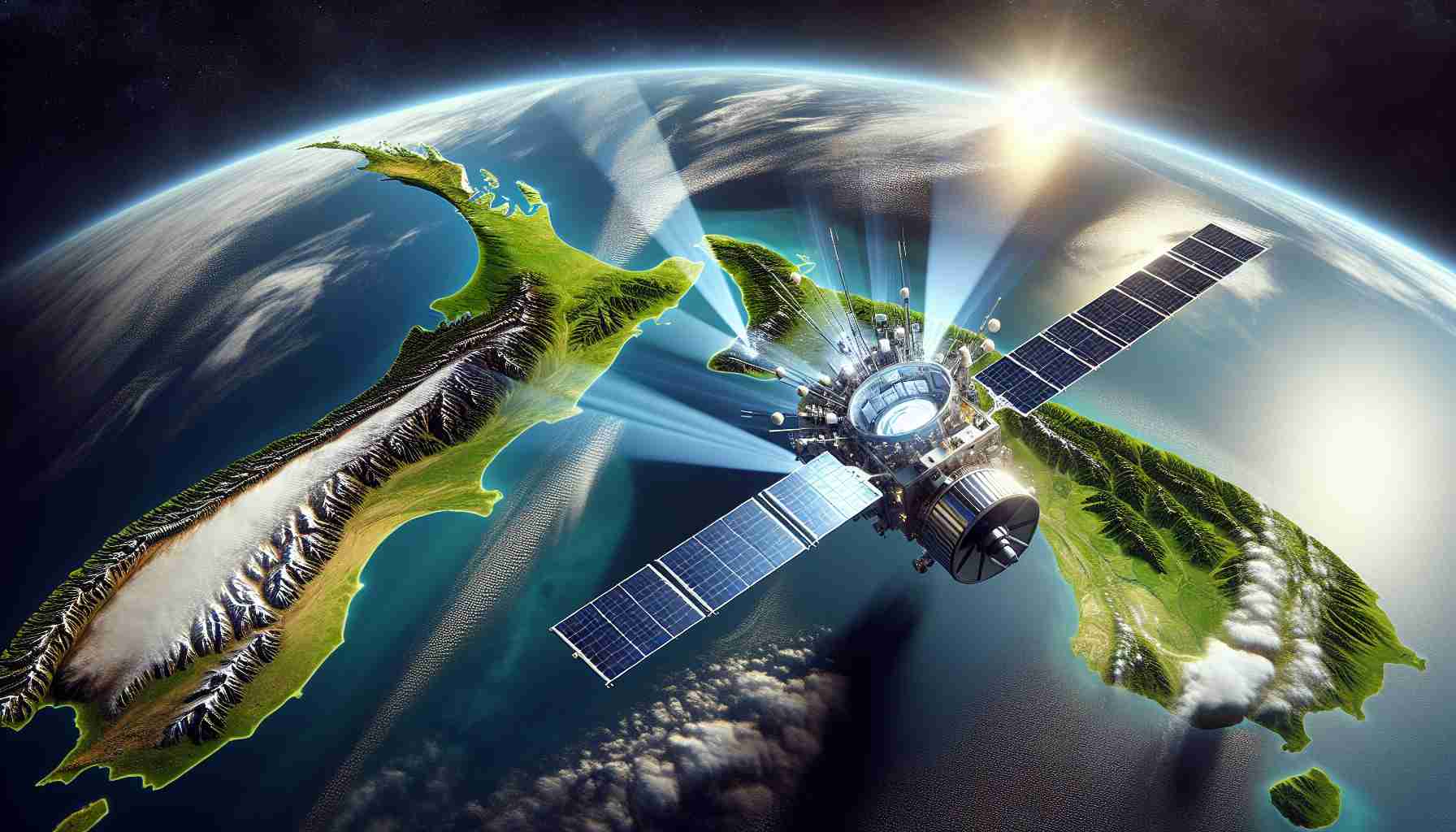
One New Zealand is set to initiate trials of a groundbreaking collaboration with a satellite communication system owned by Elon Musk’s SpaceX, aiming to enhance mobile connectivity across the nation. The telecommunications provider recently announced that it has received the necessary approvals to commence field trials of a new mobile satellite service.
According to the company’s CEO, Jason Paris, the unique landscape of New Zealand has resulted in 40 percent of the nation lacking mobile connectivity, a situation that poses challenges for many residents. He believes that the innovative technology from SpaceX will bridge these gaps, especially in times of natural disasters when traditional communication networks can fail.
Reflecting on their partnership, Paris noted that their collaboration emerged during the recovery efforts from Cyclone Gabrielle, highlighting the urgent need for a reliable backup communication system. He emphasized the current situation in Florida, where the Starlink satellites have been instrumental in maintaining communications during Hurricane Milton’s disruptions, underlining the necessity of such technology in crisis situations.
The forthcoming trials will involve a variety of mobile devices across diverse locations to assess the efficacy of the service before its full-scale launch. While One New Zealand previously promoted the partnership as a solution for universal coverage nationwide, they faced scrutiny from the Commerce Commission for allegedly misleading claims about potential limitations of the service.
New Satellite Partnership Promises Enhanced Mobile Coverage in New Zealand
In a significant move towards improving mobile connectivity, One New Zealand has partnered with SpaceX to conduct trials of a groundbreaking satellite communication service. This collaboration is aimed at addressing the extensive mobile coverage gaps that affect approximately 40% of the country due to its diverse and challenging geographical features.
What Are the Main Objectives of This Partnership?
The primary objective of this partnership is to ensure reliable mobile communication across New Zealand, particularly in remote and rural areas where terrestrial networks fail to reach. Furthermore, the initiative seeks to provide a robust communication solution during emergencies, such as natural disasters, when traditional networks tend to be unreliable.
What Are the Key Challenges Associated with the Initiative?
As with any ambitious technological endeavor, there are key challenges:
1. Regulatory Hurdles: One of the significant challenges is navigating the regulatory framework surrounding satellite communications. The collaboration necessitates approvals not just for trials, but for long-term operational licenses as well.
2. Service Limitations: Initial reports revealed potential limitations about the service, particularly concerning latency and bandwidth when compared to traditional cellular networks. Addressing these concerns is essential for public trust and adoption.
3. Infrastructure Requirements: Although satellite technology can provide coverage to remote areas, it still requires ground infrastructure, such as user terminals that need to be deployed widely.
What Are the Advantages of This New Satellite Service?
– Increased Accessibility: The partnership enables better access to mobile services in underserved regions, allowing more New Zealanders to stay connected.
– Disaster Resilience: With the capability to maintain communication during emergencies, this service can significantly enhance public safety and emergency response efforts.
– Flexibility in Coverage: Satellite systems can be rapidly deployed compared to traditional cell towers, which take longer to construct and network.
What Are the Potential Disadvantages?
– Cost Implications: The deployment and maintenance of satellite communication systems can be expensive, which may result in higher costs for consumers.
– Interference and Reliability Issues: Satellite signals can be affected by adverse weather conditions, potentially leading to disruptions in service.
– Infrastructure Dependence: Users will need specific equipment to access the satellite services, which may pose an additional barrier to entry for some users.
Conclusion
The partnership between One New Zealand and SpaceX is promising, especially in terms of improving mobile communication access in remote areas. However, the success of this endeavor hinges on overcoming regulatory, technical, and public perception challenges. As the trials commence, it will be crucial to monitor the outcomes and gather feedback to refine the service for a broader rollout.
For more information, visit the main domain of One New Zealand at one.nz and SpaceX at spacex.com.



